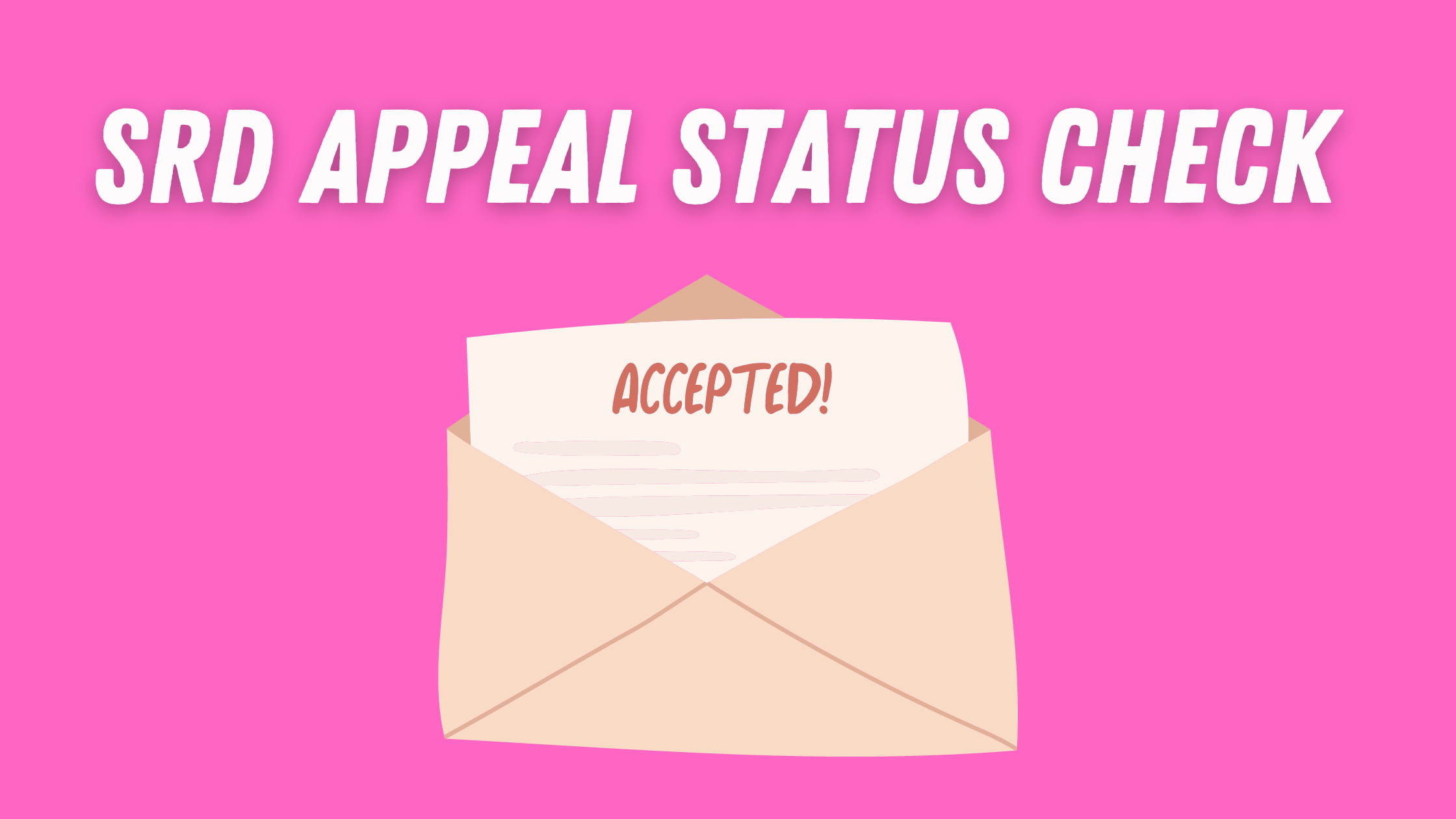With the complex landscapes of school and financial aid, understanding the SRD appeal process and its portal navigation can be a lifeline for individuals progressing through their journey of higher education. Acknowledgment of the importance of an SRD appeal, typically revolving around disputes related to finance and grades, is vital for every student.
Our exploration begins in the realm of comprehending the SRD appeal status check, leading us then to the nuances of handling the SRD portal. Let’s delve into understanding the various terminologies that define the status of these appeals, and provide solutions to the most common issues encountered by users.
Understanding SRD Appeals
The SRD appeals process is a structured framework used by institutions and organizations to assess and resolve academic disputes raised by students for financial aid.
It is a pathway for students who believe that they have not been treated fairly and want to challenge or dispute an issue. The process ensures fairness, transparency and ethical handling of student concerns.
Requesting an SRD Appeal
The initial step in an SRD appeal process often begins with a conversation. The student must first attempt to rectify their concern with the appropriate department. However, if a resolution is not reached, a formal appeal can be made to the concerned department.
The appeal should be a written statement explaining why the student believes their situation is unfair. It should include specific evidence to support their case, such as emails or other communication, relevant documents or reports, and witnesses. The student should keep copies of all their correspondence and evidence.
Appeal Review Process
Upon receiving the written appeal, the institution’s Student Resolution Docket committee reviews the issues raised by the student. The committee may consist of faculty, administrators, and sometimes even students. Their role is to ensure that the student’s appeal is given a fair hearing.
Deciding on the Appeal
After the review process, the committee completes its findings. They might uphold the original resolution, modify it or recommend for it to be overturned. Once a decision has been made, the student will be informed about the outcome. The length of time this process takes can vary depending on the institution’s policies and the specifics of the appeal.
After the Appeal
If the student is not happy with the outcome of the appeal, there may be a further option to appeal to a higher authority within the institution, such as the institution’s president or an academic board. This process often involves another round of evidence submission and review.
Learning to Navigate the SRD Portal
The Social Relief of Distress (SRD) portal is a web-based platform that allows students to appeal the status of their SRD. To be able to access the SRD portal, you will need your login credentials. This usually comes in the form of a username, typically your student ID or email address, and a password.
Having the correct login information is crucial in gaining access to this portal. If you have not yet registered or forgotten your credentials, there are usually prompts or links to recover this information or to create a new account.
Look for headings or menu options such as “My Appeals”, “Status Check“, or similar terms; these are likely to be the places where you’ll find the information or forms needed for checking the status of your SRD Appeal.
Checking SRD Appeal Status
In the appropriate section of the portal, you should be able to view the details of your appeal. The status of your appeal could be indicated in many forms, such as “Under Review,” “Approved,” “Denied,” or “Pending.” This will provide you with a real-time update of the progress of your appeal.
Keep in mind, response times can vary, and if you’ve recently submitted an appeal, it may take some time before a status is given. If your status appears to be stuck or unchanged for longer than expected, look for a “Contact Us” or “Help” section in the portal for further assistance.
SRD Appeal Status Definitions
The SRD (Social Relief of Distress) appeal process begins when you submit an application for review in case of disagreement with a decision regarding social distress benefits. The application then goes through several stages before a final verdict is delivered. Each stage is accompanied by a status that reflects the current state of your application.
Received
Received status indicates that your SRD appeal has been successfully submitted and is now with the relevant authorities. This means your appeal has been logged into the system and is awaiting action. Remember that a ‘Received’ status does not ensure acceptance or denial; it merely acknowledges the reception of your appeal.
In Review
When the status shows ‘In Review’, it means your appeal is currently being evaluated. The authorities are investigating and verifying the information and documentation you provided during the appeal submission. This is typically the longest stage of the appeal process. It involves cross-checking your appeal against the initial decision, understanding your stated reasons for disagreement, and often includes additional research.
Decision Made
The ‘Decision Made’ status signals the end of the appeal evaluation process. The authorities have made a final decision about your appeal. However, typically this status does not indicate what the decision is. The detailed result, whether your appeal was approved or denied, is usually communicated via post or directly through the respective portal.
You may also encounter other status definitions during your SRD appeal process like ‘Pending’, ‘Re-Assessment’, ‘Approved’, or ‘Denied’. Pending means your appeal is awaiting review. Re-Assessment implies your appeal is subject to second examination due to additional information or a request for reevaluation. Approved and Denied statuses reflect the exact result of your appeal.
In general, understanding these statuses can help you be aware of where you stand in the appeal process and what to expect next. You should ideally check your status regularly to stay informed and be prepared for the outcome.
Troubleshooting Common Problems With SRD Application
The first common problem is logging into the SRD system. If you’re having trouble logging in, there are a few key things to check. Firstly, ensure you’re entering the correct username and password.
A common issue is that users forget their password or username details, or they have entered them incorrectly due to typographical errors. If you have forgotten your login details, use the “Forgot Password” or “Forgot Username” options on the log-in page. Follow the prompts to reset or retrieve them.
If you are still unable to log in after following these steps, it may be a technical issue or temporary maintenance on the SRD server. Trying again after a few hours may resolve the issue. If not, consider reaching out to the SRD helpline.
Errors While Checking Status
When you’re trying to check the status of your SRD appeal, you may encounter some errors. If you get an error message, read it carefully. It will likely inform you about what went wrong. Common reasons for getting an error message might be due to site overloads, network connectivity issues, or incorrect entry of information.
If it’s a site overload issue, you may want to wait a while before trying again. If the error message indicates a problem with your internet, try refreshing your connection or finding a more stable network. If you’ve entered information incorrectly, double-check all form fields before submitting them again.
Navigating Through the Portal
Lastly, the SRD portal may be difficult to navigate for first-time users, or changes to the system can confuse returning users. Always start from the homepage and take note of all menu items and sections. Use the provided search function or the site map, usually available at the bottom of the homepage, to help you find the relevant sections.
If you’re stuck at a certain point, try to go back to the last step where you felt sure about what you were doing. Explore related links or use built-in help functions that can guide you more accurately. Take things slowly, step by step, and don’t rush. Each section is designed with a purpose, so take your time to read everything carefully to avoid any confusion or mistakes.
Remember that learning a new system takes time, and it’s normal to encounter setbacks along the way. Patience, careful reading, and following prompts or instructions can help navigate most hurdles in checking your SRD appeal status.


